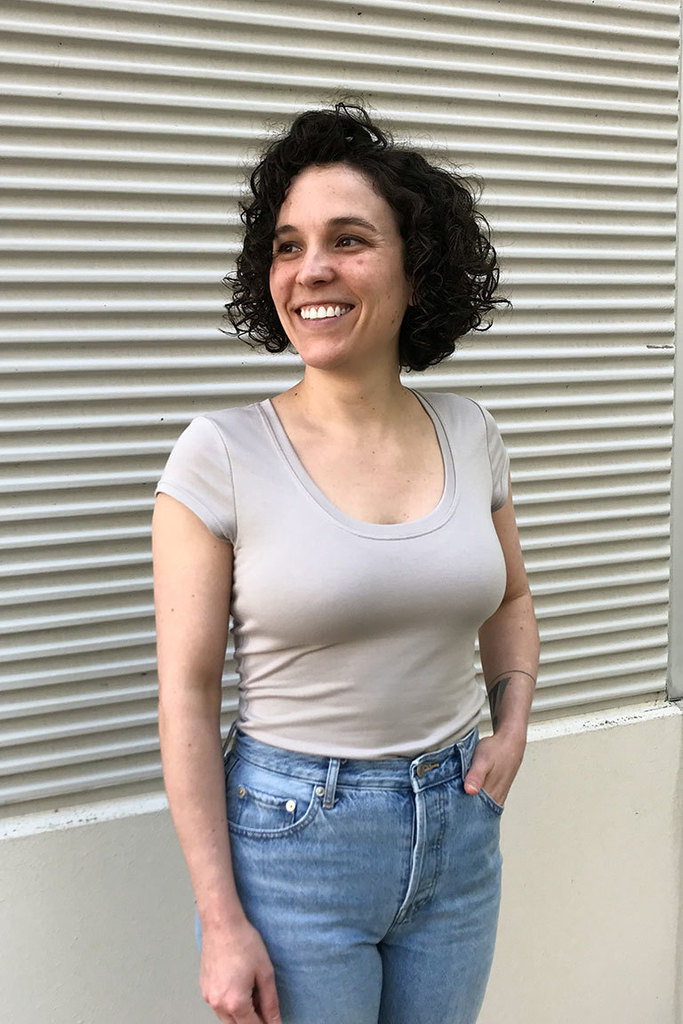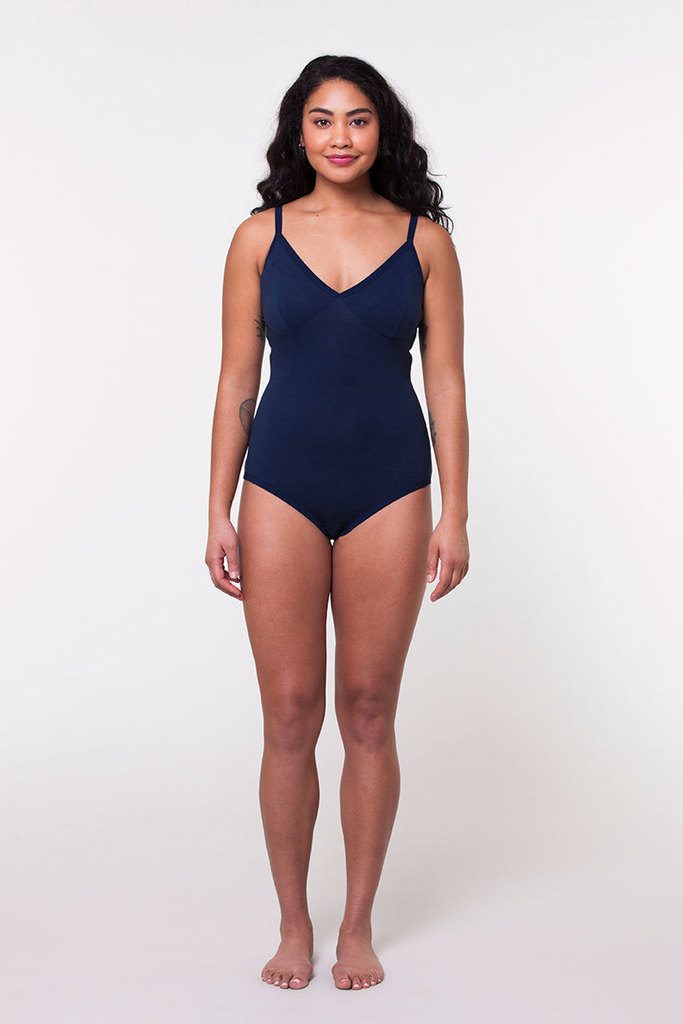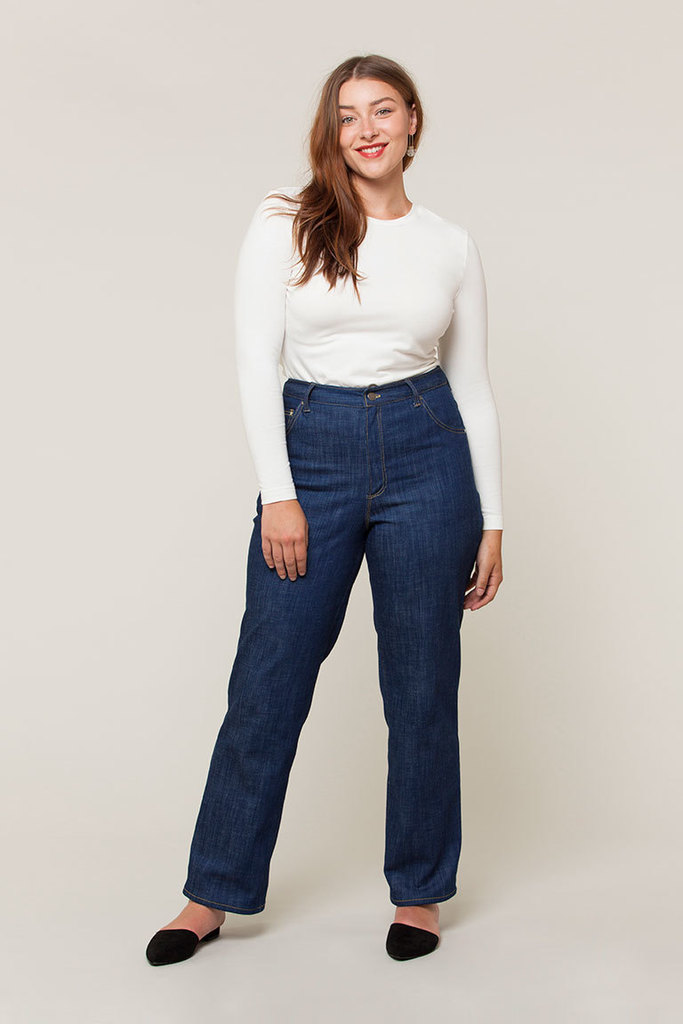Learning how to take your body's measurements is one of the best ways to level up your sewing practice. In this video, Robin and Wallis will guide you through which measurements you need, plus share a bunch of tips for making sure you measure accurately.
Recommended Materials:
- Flexible measuring tape
- Pencil
- Paper
- A mirror or a friend
Video Transcript
Hi, I'm Robin. I lead the Pattern Development team here at Seamwork. We're a community of sewists all about sewing a handmade wardrobe. This is Wallis, together we draft the patterns that we bring to you each month with Seamwork Magazine. Today we're going to show you how to take your measurements.
We're gonna cover three things. 1: Why taking your measurements will help you have better sewing. 2: Tips and tricks to help you take your measurements. And 3: How to take your measurements. Let's get started.
So why is it important to take your measurements? Did you know that ready-to-wear sizes don't correlate to sewing sizes? Every pattern company has their own set of size ranges and they're all different. Knowing your true measurements will help you choose which size to cut and when to blend between sizes. It'll also help you understand how much ease is in the pattern, which is the first step to getting the perfect fit, just for you. If you'd like to know more about ease, check out our video All About Ease right here on the Seamwork channel.
We know it can feel awkward to take your measurements. It's really tempting to judge the size that you are, or to compare yourself to the size you used to be, or even the size that you want to be. Just treat these numbers like helpful little tools that will help you get the perfect pattern with the perfect fit, that will make you feel amazing in the garment you create. Now we have some tips and tricks to help you get the best set of measurements you can.
The first tip is to take your measurements in your underwear. If that's not an option, you
can wear some close fitting clothes and choose a bra that will give you the best average bust measurement. Enlist a friend, or use a mirror to help, have a
good flexible measuring tape, keep a pencil and paper handy to jot down the numbers, and finally use your natural normal everyday posture, and don't forget to breathe.
So how frequently should you take your measurements? If you sew often you can get away with taking your measurements monthly, but if you don't sew frequently, you should take them before each and every pattern.
At the bare minimum, you're gonna need your bust, waist, and hip
measurements. Let's start with the bust. To take your bust measurement, put your measuring tape here around the fullest part.
For your waist measurement, you want to measure here at the narrowest part of your torso. It may be helpful if you're fairly straight to measure in a few different spots, and take the smallest measurement, or to bend from side to side like this. Now this is your natural waist, which is different from the garment's finished waist measurement. You need to know this measurement regardless of where you normally like to wear your pants or skirt.
To measure the hip, you want to take your measurement at the fullest part of your bottom, right about here, and again make sure your measuring tape is parallel to the floor.
In addition to your bust, waist, and hip, here are a few other measurements that are helpful while sewing. The first is cup size. You're probably thinking I already know my cup size, but again ready-to-wear cup size and sewing cup size are two different things. To get your sewing cup size, you want to measure your high bust which is right here. Subtract this number from your full bust. If there's a one inch difference, you're an A cup. A two inch difference, a B cup. Three inches, a C cup and so on. You should check your pattern, or the company's website to find out what size cup they draft for. Here at Seamwork and Colette, our Misses size range is drafted for a C cup. Our Curvy size range is drafted for a double D cup. Knowing this is important if you need to make a full
or small bust adjustment.
The next measurement is bust depth. To get your bust depth, you want to start your measuring tape here, where your neck meets your shoulder, and measure down to the apex. This measurement is really important if your garment has bust darts. It will help you figure out whether the bust darts are in the right spot, or whether you want to raise or lower them.
Shoulder width is the measurement from shoulder point to shoulder point. This is a hard measurement to take. It can help if you put on a shirt that you already own that fits well in the shoulders. Then measure from shoulder seam to shoulder seam. Right across the back here. This measurement's really important. An ill-fitting shoulder can affect the hang and the balance of your whole garment. Just remember that some designers choose to have a drop shoulder and take that into account when adjusting it.
For garments with sleeves, it's very helpful to know your bicep measurement. That's measured at the fullest part of your upper arm, here. A bicep that is too tight can make your whole garment feel tight. It will affect your lift and it will feel like it's pulling right across the front there.
Waist length, to get your waist length you want to measure from the nape of your neck down to your natural waist. You should compare this measurement to the finished waist length measurement on your pattern. This will help you know whether you need to lengthen or shorten your top.
If you're making pants, you'll want to know your thigh and calf measurements also. To measure your thigh, you want to measure the widest part, about here. To measure your calf, you're measuring the fullest part of your calf right below your knee, about here.
The last measurement I want to talk about is inseam. To get your inseam measurement, you should hold the measuring tape at your crotch and let it drop to the floor. I like to take the measurement right around my ankle bone.
Taking your measurements is definitely one of the more tedious parts about sewing, but also one of the most important. Knowing these helpful little numbers is going to give you the best start to getting a good fit and making a garment that you feel amazing in and want to wear, and isn't that always the goal!?
Thanks for joining us today and be sure to subscribe to the Seamwork channel to keep up to date on all our latest videos that will help you create the perfect handmade wardrobe.



